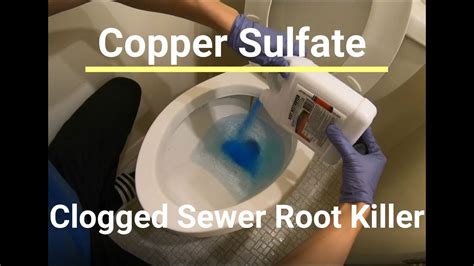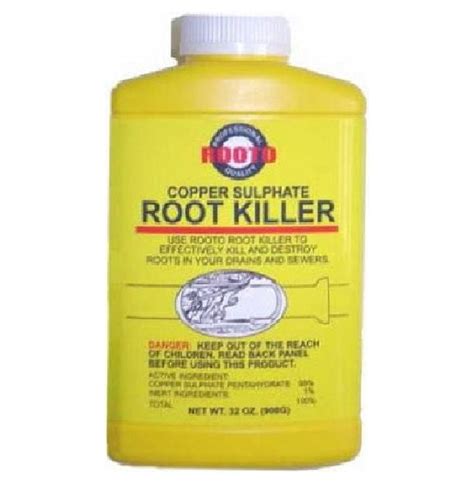copper sulfate septic system distribution box Depending on the system, a distribution box may be installed where the lateral lines are connected to the septic tank. It is preferable to apply little doses every day over a two-week . By following proper installation guidelines, such as selecting the appropriate junction box size, securing cables with clamps or connectors, and ensuring the presence of a removable cover, junction boxes can be wired safely and efficiently.
0 · copper sulfate sewer line
1 · copper sulfate root control
2 · copper sulfate for tree sewer
3 · copper sulfate for septic system
The supply is 3-wires: two blacks each going to a large breaker labeled for the cooktop and a stranded bare wire which connects to the panel ground. I'm reinstalling the same old cooktop from the 80's and it has 4 wires: black, red, white, and green.

Lacking a distribution box as shown in Figure 8 of http://extension.missouri.edu/p/EQ401, the next best option is to flush 1/2 cup of copper sulfate crystals down the toilet each day for a period of two weeks (based on a 1000-gallon septic tank). DO NOT put copper sulfate into any portion of your septic system. It can/will cause plugging of the drain field. You will likely get to find out how much a new drain field costs.Add 2 to 6 pounds of Copper Sulfate to the distribution box placed between the septic tank and the drain field to treat the drain field pipes. If the distribution box does not have an opening, a .A better treatment of the lateral lines can be accom-plished if copper sulfate is added to the distribution box where the lateral lines are connected to the septic tank. Some systems do not .
Depending on the system, a distribution box may be installed where the lateral lines are connected to the septic tank. It is preferable to apply little doses every day over a two-week .

To spread the copper sulfate in the septic system, flush the system many times. The distribution box for the septic system, if one is present, should be located between the tank and the soil .Instead, find the distribution box that connects the main tank to the several drain field lines and put the chemical there, following the label directions. Dr. Larry West, who IS a soil scientist says: “The basic question is if roots interfere with .
Definition of a Septic D-Box: a septic distribution box is a container used to receive septic system effluent from a septic tank and to re-distribute the effluent into a network of attached drain-field or soakaway bed absorption trenches & .Don’t put copper sulfate into the septic tank, you need bacteria..remove trees & bushes .recommend 40’ from leach lines.. Locate the distribution box. Have a plumber run a camera . Lacking a distribution box as shown in Figure 8 of http://extension.missouri.edu/p/EQ401, the next best option is to flush 1/2 cup of copper sulfate crystals down the toilet each day for a period of two weeks (based on a 1000-gallon septic tank). DO NOT put copper sulfate into any portion of your septic system. It can/will cause plugging of the drain field. You will likely get to find out how much a new drain field costs.
copper sulfate sewer line
Add 2 to 6 pounds of Copper Sulfate to the distribution box placed between the septic tank and the drain field to treat the drain field pipes. If the distribution box does not have an opening, a cleanout plug opening should be installed.A better treatment of the lateral lines can be accom-plished if copper sulfate is added to the distribution box where the lateral lines are connected to the septic tank. Some systems do not have this facility. Avoid contaminating drinking water of . You can buy copper sulfate from a yard care store or online. Copper sulfate dries out the tree roots and kills them after a small amount of time. You can also add the copper sulfate directly to the septic system's distribution box if you're able. Repeat the process 2–3 times a year to keep tree roots from growing.
Depending on the system, a distribution box may be installed where the lateral lines are connected to the septic tank. It is preferable to apply little doses every day over a two-week period rather than a huge amount all at once, according to research.To spread the copper sulfate in the septic system, flush the system many times. The distribution box for the septic system, if one is present, should be located between the tank and the soil absorption area.Instead, find the distribution box that connects the main tank to the several drain field lines and put the chemical there, following the label directions. Dr. Larry West, who IS a soil scientist says: “The basic question is if roots interfere with the onsite drainfield lines. I have heard reports that they do, but they are very infrequent.Definition of a Septic D-Box: a septic distribution box is a container used to receive septic system effluent from a septic tank and to re-distribute the effluent into a network of attached drain-field or soakaway bed absorption trenches & pipes.
Don’t put copper sulfate into the septic tank, you need bacteria..remove trees & bushes .recommend 40’ from leach lines.. Locate the distribution box. Have a plumber run a camera down each lateral. Now you know for sure the condition of the leach field.
Lacking a distribution box as shown in Figure 8 of http://extension.missouri.edu/p/EQ401, the next best option is to flush 1/2 cup of copper sulfate crystals down the toilet each day for a period of two weeks (based on a 1000-gallon septic tank).
DO NOT put copper sulfate into any portion of your septic system. It can/will cause plugging of the drain field. You will likely get to find out how much a new drain field costs.Add 2 to 6 pounds of Copper Sulfate to the distribution box placed between the septic tank and the drain field to treat the drain field pipes. If the distribution box does not have an opening, a cleanout plug opening should be installed.
5 metal house numbers
A better treatment of the lateral lines can be accom-plished if copper sulfate is added to the distribution box where the lateral lines are connected to the septic tank. Some systems do not have this facility. Avoid contaminating drinking water of . You can buy copper sulfate from a yard care store or online. Copper sulfate dries out the tree roots and kills them after a small amount of time. You can also add the copper sulfate directly to the septic system's distribution box if you're able. Repeat the process 2–3 times a year to keep tree roots from growing.Depending on the system, a distribution box may be installed where the lateral lines are connected to the septic tank. It is preferable to apply little doses every day over a two-week period rather than a huge amount all at once, according to research.
50 amp power distribution box
To spread the copper sulfate in the septic system, flush the system many times. The distribution box for the septic system, if one is present, should be located between the tank and the soil absorption area.Instead, find the distribution box that connects the main tank to the several drain field lines and put the chemical there, following the label directions. Dr. Larry West, who IS a soil scientist says: “The basic question is if roots interfere with the onsite drainfield lines. I have heard reports that they do, but they are very infrequent.Definition of a Septic D-Box: a septic distribution box is a container used to receive septic system effluent from a septic tank and to re-distribute the effluent into a network of attached drain-field or soakaway bed absorption trenches & pipes.
copper sulfate root control
copper sulfate for tree sewer
How to wire an electrical junction box. A junction box is used to add a spur or to extend circuits and direct power to lights and additional sockets. Advice on wiring electrical junction box with easy to follow junction box wiring diagrams, including information on 20 and 30 amp junction boxes.
copper sulfate septic system distribution box|copper sulfate root control